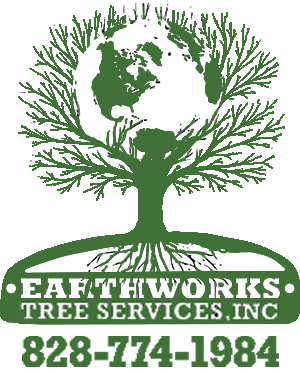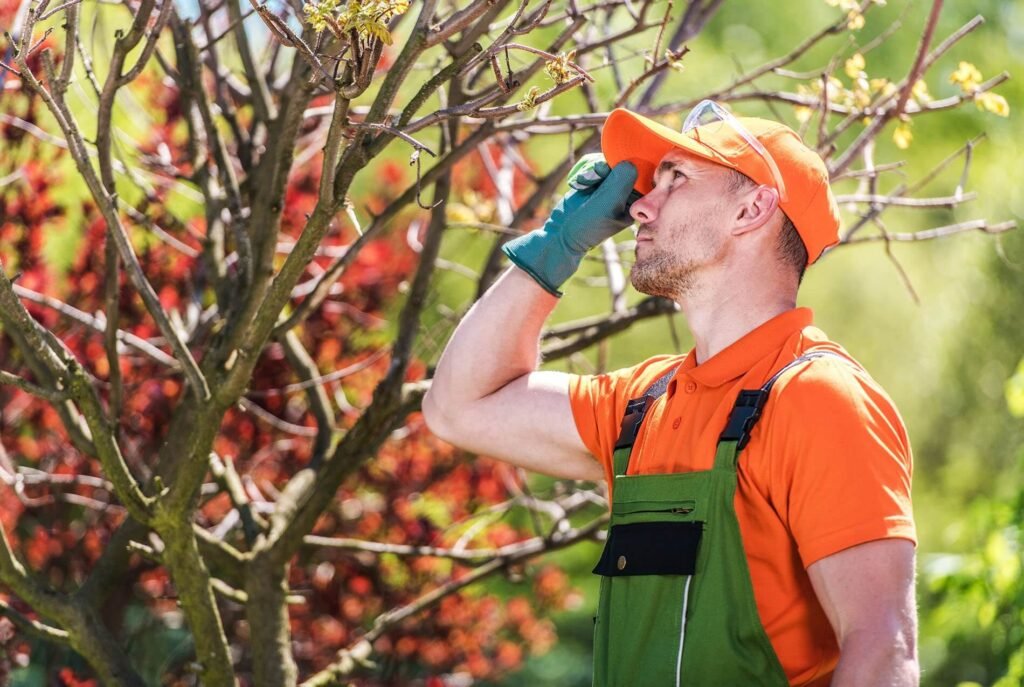Prompt recognition of hazardous tree conditions is essential for maintaining safety and protecting property. One clear indicator is the presence of large dead branches. These limbs can detach without warning, creating risks for people, pets, and structures. Frequent deadwood in the upper canopy often goes unnoticed, making routine visual assessments necessary.
Structural damage to the trunk is another critical concern. Cracks, deep splits, or hollow sections weaken the tree’s stability. When a substantial portion of the trunk is compromised, the risk of collapse increases significantly and requires prompt evaluation by a qualified professional.
Fungal growth at the base or on the trunk of a tree often indicates internal decay. While external signs may appear minor, the internal deterioration can severely undermine structural strength. Persistent fungal presence should be addressed without delay.
Pest infestations are also cause for concern. Insects such as wood-boring beetles or termites can rapidly deteriorate the health of a tree, making it unstable and unsafe to keep standing. Visible boring holes, frass, or increased insect activity near the bark are signs that require attention.
When more than half of a tree’s canopy is dead or declining, this suggests widespread damage. Trees in this condition have a low probability of recovery and may pose safety threats, especially during high winds or storms.
Monitoring these warning signs supports timely decision-making and helps reduce the risk of injury or property damage. If you observe one or more of these symptoms, consulting with a certified tree professional is recommended to assess whether immediate removal is necessary.
Dead or Dying Branches
Dead or dying branches are often the most visible indicators that a tree may be in distress. These branches can compromise the tree’s overall health and stability, posing safety risks to nearby people and property. One of the easiest ways to spot a problem is by looking for branches that have lost their leaves or have taken on a brittle, dry appearance. You might notice that these branches feel significantly lighter than healthy ones—a clear sign that something is off.
Identifying Dead Branches
To assess whether a branch is truly dead, you can perform a straightforward scratch test. By scraping back a small section of bark with your fingernail or a small tool, you reveal the inner layers of the branch. If the area underneath is brown and dry, it likely indicates decay; however, if it’s green and moist, then the branch may be alive but stressed. This test can prevent unnecessary tree removals and help pinpoint where care might be needed.
One practical insight is to routinely inspect your trees for signs of decline. Make it a part of your seasonal yard work—much like raking leaves or mowing the lawn. A monthly check will allow you to catch issues before they escalate. Plus, if you ever find yourself questioning whether a branch should stay or go, remember that large dead branches not only jeopardize safety but can lead to further decay in healthy parts of the tree.
As we transition away from identifying dead branches, it’s essential to explore additional warning signs related to tree health, including fractures in branches and other structural concerns.
Signs of Leaning or Instability
Every tree tells a story—some of triumph, others of struggle. When trees lean at an angle greater than 15 degrees from vertical, it often signifies underlying issues that could compromise their stability. Such signs shouldn’t be ignored, as they may indicate disturbances leading to potential collapse. It’s important to consider if this lean is a recent development or a longstanding condition; a new lean often indicates serious problems requiring immediate attention.
Evaluating Tree Lean and Structural Risk
Even a slight lean can indicate future structural failure. Trees leaning between 5 and 15 degrees should be monitored for progression, changes in canopy weight, or soil displacement. A lean exceeding 15 degrees is a high-risk condition that warrants immediate evaluation by a certified arborist to determine the need for removal or corrective action.
Warning signs such as soil heaving, base cracks, or trunk stress fractures often indicate root instability. For secure anchorage, roots should extend at least 1.5 times the tree’s height. When this structural balance is disrupted, the likelihood of tree failure increases—especially during high winds or storms.
Root System Condition and Stability
A tree’s root system is critical to its health and structural support. If excavation or soil compaction damages more than 50% of the roots, removal is typically necessary to prevent collapse. Additionally, leaning trees with trunk diameters exceeding 12 inches and visible instability have a significantly higher risk of failure.
Signs of decay at the base, such as fungal growth, are also cause for concern. These symptoms often point to internal rot that compromises the tree’s integrity. Prompt action reduces the risk of injury and property damage.
Environmental and Safety Risks
Trees located near utility lines must be carefully managed. When their height surpasses 25 feet, they pose a serious hazard during storms or high winds. Maintaining proper clearance and monitoring health in these cases is essential for public safety.
Understanding and acting on signs of structural weakness ensures long-term safety and contributes to a healthier, more secure environment.
Compromised Structure or Health Indicators
Structural issues in trees often signal hidden dangers that require prompt attention. Cracks in the trunk—especially those exceeding 1/4 inch in width—are critical warning signs. These compromise the tree’s stability and significantly increase the risk of failure during storms or strong winds. Early inspection by a certified arborist is essential when such damage is present.
Common Structural Warning Signs
- Vertical trunk cracks: These can develop as trees expand or due to environmental stress.
- Cavities or hollow trunks: Internal decay reduces structural support, making collapse more likely.
- Large wounds from past damage: Previous injuries may weaken the tree and leave it susceptible to pests or disease.
In addition to structural concerns, health indicators must also be evaluated. Fungal growth, such as mushrooms or conks at the base of a tree, typically signals internal rot. If over 50% of the tree shows visible fungal activity, it is likely compromised and should be assessed promptly.
Leaf discoloration is another indicator. If more than 30% of leaves are yellowing or browning, the tree may be experiencing stress from pests, disease, or environmental issues. Similarly, if over 25% of branches appear dead, overall tree health may be in decline.
Proactive evaluation of these symptoms helps reduce safety risks and supports proper tree care decisions, protecting both people and property.
Environmental Risks Near Hazardous Trees
The environment surrounding a tree dramatically influences its stability and health. For example, trees positioned near power lines present a unique set of dangers. A simple gust of wind can cause branches to snap or swing against those lines, potentially leading to dangerous electrical hazards or even fires. During storm seasons, this risk amplifies; statistics reveal that around 30% of tree-related accidents occur due to falling branches or entire trees impacting power lines. Consequently, if a tree’s health is compromised, such as by being weakened by pests, it becomes crucial to evaluate its status urgently.
One less obvious but critical aspect to consider is soil condition. Trees planted in compacted soils or areas with poor drainage can develop unstable root systems, decreasing their ability to anchor themselves firmly within the ground. Furthermore, when soil stressors are introduced, like excavation or heavy construction work nearby, it can take a toll on the roots. If substantial damage occurs—around 50% of roots disrupted—it may necessitate removal due to potential hazards.
It’s also vital to look at the cumulative burden of environmental stressors. Urban settings often mean additional challenges: pollution, limited sunlight due to other structures, and watering restrictions can weaken trees and make them more prone to illness and decay. Trees with significant structural defects are not only risks to your property—they’re liabilities in areas where children play and vehicles pass.
By recognizing the environmental risks trees face and understanding the importance of timely maintenance, we lay the groundwork for seeking expert guidance on how best to ensure their safety and longevity.

Book a Professional Tree Evaluation
If you’ve noticed unusual leaning, dead branches, or fungal growth near your trees in Asheville, NC, it’s time to book a professional tree evaluation with Earthworks Tree Services. These warning signs often indicate internal decay or structural instability that could lead to property damage or injury. Our certified arborists provide detailed assessments to determine the safety of your trees and recommend the right course of action.
Don’t wait until it’s too late—schedule your evaluation today and protect your home, yard, and loved ones with confidence.

